‘This is just the beginning’ National Inquiry into Missing and Murdered Indigenous Women and Girls issues final report, makes sweeping calls for change
Read this article for free:
or
Already have an account? Log in here »
To continue reading, please subscribe:
Monthly Digital Subscription
$0 for the first 4 weeks*
- Enjoy unlimited reading on winnipegfreepress.com
- Read the E-Edition, our digital replica newspaper
- Access News Break, our award-winning app
- Play interactive puzzles
*No charge for 4 weeks then price increases to the regular rate of $19.00 plus GST every four weeks. Offer available to new and qualified returning subscribers only. Cancel any time.
Monthly Digital Subscription
$4.75/week*
- Enjoy unlimited reading on winnipegfreepress.com
- Read the E-Edition, our digital replica newspaper
- Access News Break, our award-winning app
- Play interactive puzzles
*Billed as $19 plus GST every four weeks. Cancel any time.
To continue reading, please subscribe:
Add Free Press access to your Brandon Sun subscription for only an additional
$1 for the first 4 weeks*
*Your next subscription payment will increase by $1.00 and you will be charged $16.99 plus GST for four weeks. After four weeks, your payment will increase to $23.99 plus GST every four weeks.
Read unlimited articles for free today:
or
Already have an account? Log in here »
Hey there, time traveller!
This article was published 03/06/2019 (2383 days ago), so information in it may no longer be current.
GATINEAU, Que. — Darlene Osborne has had few good sleeps since her granddaughter’s remains were found in the Red River in 2003. On Monday, she expected to rest better than normal.
“It’s very painful when you tell your story,” said Osborne, who hails from Norway House Cree Nation, on the north end of Lake Winnipeg. “But now it’s a good feeling, and I know I’m going to rest well.”
Osborne was among hundreds of family members who gathered just outside Ottawa for the release of the final report of the National Inquiry into Missing and Murdered Indigenous Women and Girls.
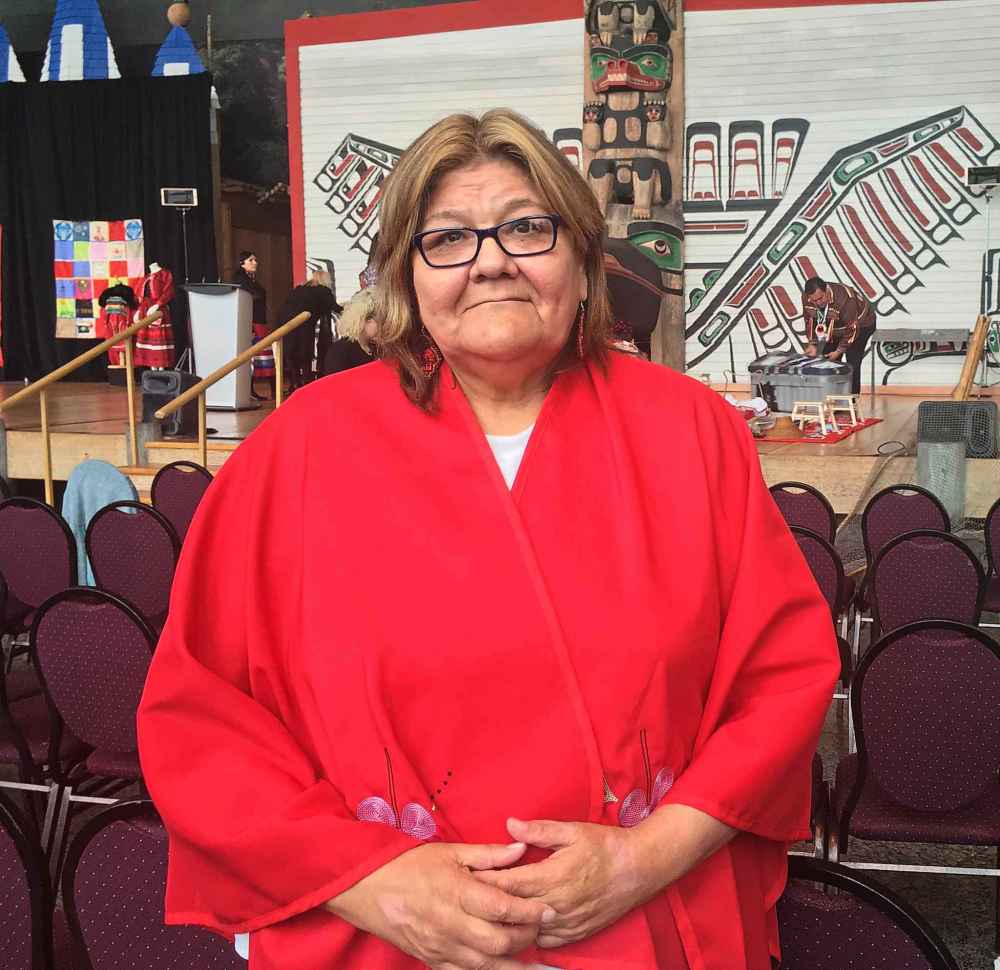
The 1,200-page report says everything from the child-welfare system to racist stereotypes are contributing to an ongoing “genocide” against First Nations, Métis and Inuit women.
“This country is at war, and Indigenous women, girls, and 2SLGBTQQIA (two-spirit, lesbian, gay, bisexual, transgender, queer, questioning, intersex and asexual) people are under siege,” reads the report.
It has 231 “calls for justice,” ranging from media coverage to prisons.
Osborne said she hopes those recommendations will help end a phenomenon in which three of her relatives have died and one has disappeared.
“This is just the beginning,” she said.
Her granddaughter, 16-year-old Felicia Velvet Solomon-Osborne, used to love dancing at powwows with her cousins.
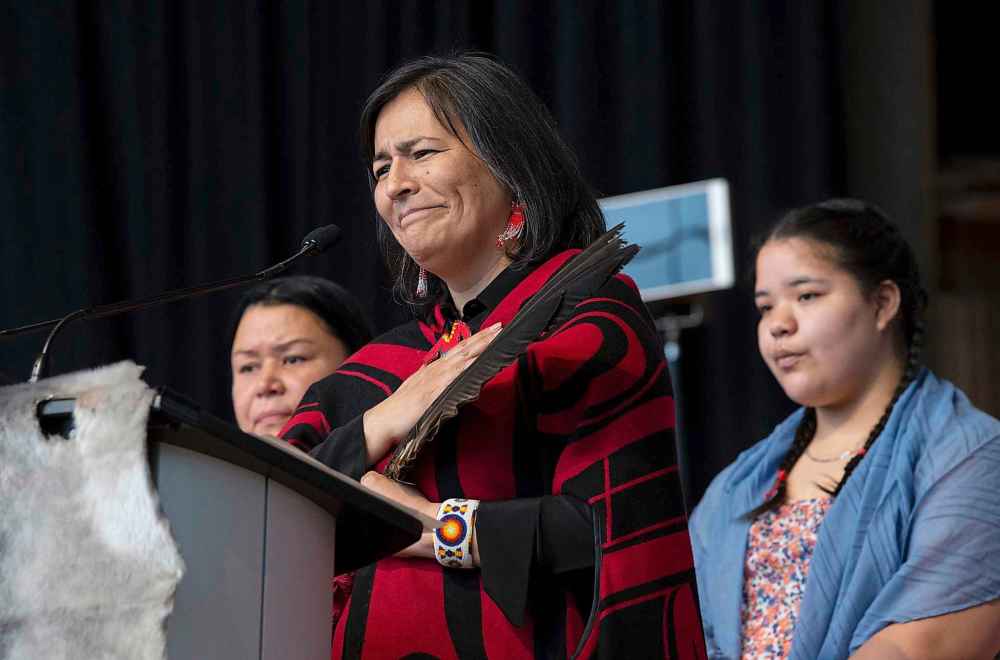
She vanished in March 2003, and was last seen walking out of her Winnipeg school. Osborne claims city police waited a week to phone her. Three months later, Felicia’s arm and leg were pulled from the Red River.
“We are still waiting to know who did this to our granddaughter,” said Osborne.
Prime Minister Justin Trudeau resisted using the word “genocide” in his speech to families and commissioners.
“We have failed you. But we will fail you no longer,” he told them.
Trudeau pledged to craft a national action plan in lockstep with Indigenous people, telling them failures by the justice system are “not a relic of our past.”
Many of the issues take centre stage in Manitoba.
The report notes sexual abuse against Indigenous women in the province goes back to at least 1880, when Manitoba MP Joseph Royal (1837-1902) said the North West Mounted Police acted with “disgraceful immorality” across the Prairies.
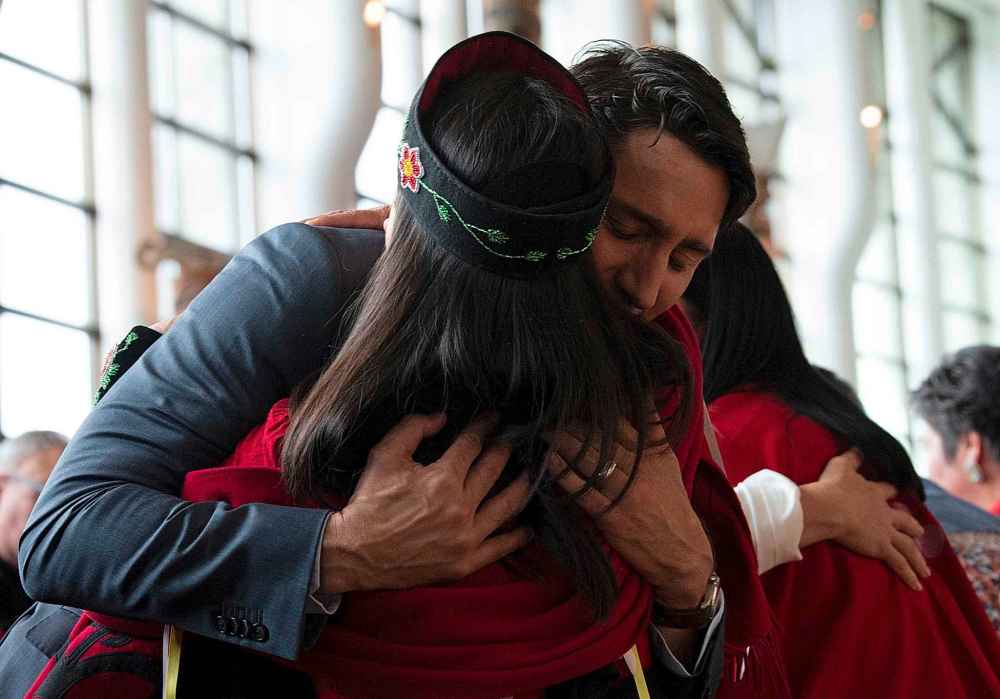
‘Indigenous people have certainly endured some horrific things in the last 150 years… it’s not a big step to characterize this as genocide’
– Winnipeg Police Service Chief Danny Smyth
It ties this to last summer’s bombshell allegations the RCMP “organized gangbangs” for Manitoba Hydro workers with Fox Lake Cree Nation women in the 1960s, as well as claims employees in camps near the Keeyask megaproject are still perpetuating sexual assaults.
The report calls on ending child-welfare “birth alerts” — where Manitoba hospitals notify Child and Family Services agencies when a former ward of the state has a own child, to arrange a possible apprehension in the maternity ward.
Inquiry commissioners linked CFS with genocide, saying it perpetuates the horrors of residential schools and the Sixties Scoop. “It is a direct attack on the survival of the group, culturally, biologically, physically, and overall.”
‘We can’t just let this report sit on the shelf… It’s time to start implementing what Indigenous women and girls have been calling for, for decades’
– Hilda Anderson-Pyrz, MMIWG liaison for Manitoba Keewatinowi Okimakanak. She lost her sister, Dawn, in 2011
It cites testimony from Alaya McIvor, whom CFS agents offered a bus ticket from her northern reserve to Winnipeg at age 12. She arrived alone and testified a man waiting outside the station spotted her, and quickly groomed her into sex work.
The report asks for funding for shelters and “safe rides” programs, especially along intercity bus routes abandoned last year by Greyhound. It says girls are being “shipped between cities” in the Prairies in triangles, in a repeating loop from Saskatoon to Regina to Winnipeg.
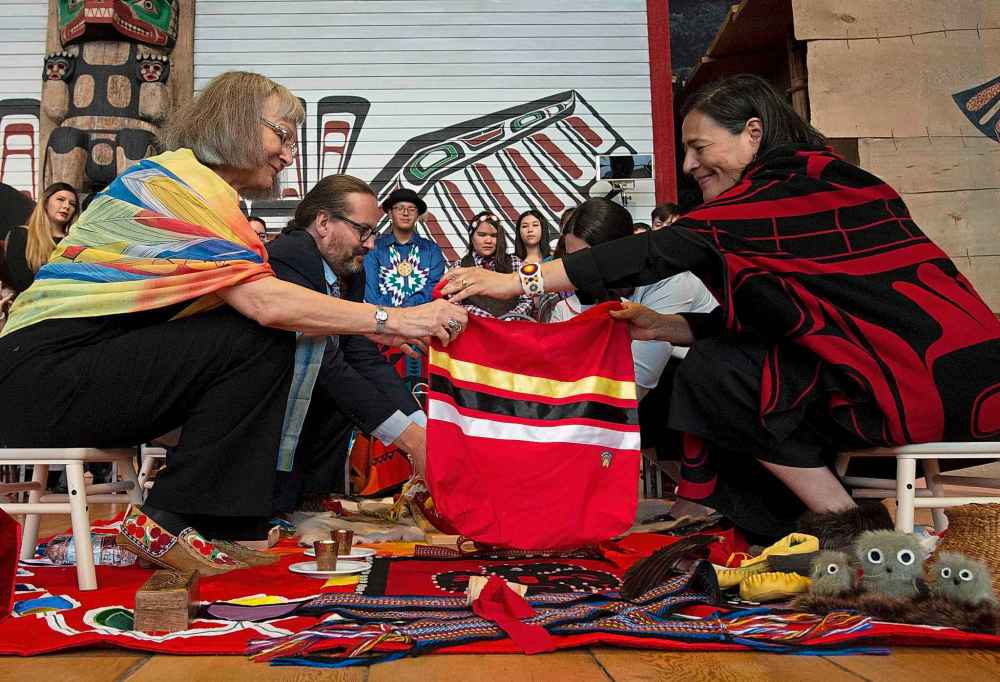
The report calls for better recognition of community-based crime-prevention groups, saying governments must “expand and legitimize” programs such as the volunteer Bear Clan Patrol and reform the criminal-justice system.
It also says Ottawa needs to step up its review of Indian Act status, as the federal Liberals have only partially rectified sexual discrimination that removed Indian status from First Nations women who married non-indigenous men, freezing some of them out of their home communities.
‘This inquiry has allowed us to enter the consciousness of Canada to examine ourselves as a nation state, and how we need to end violence against women’
– Garrison Settee, grand chief of Manitoba Keewatinowi Okimakanak, which represents northern reserves.
Métis groups had protested the inquiry’s lack of adequate focus on their women, and how they fall through the cracks of social services. The report goes over Métis history, from the Red River Colony to the clearing out of shantytowns such as Winnipeg’s Rooster Town in the late 1950s.
The report briefly touches on domestic violence, as Indigenous men are often the offenders in cases of gender-based violence against Indigenous women. It traces this to colonial systems erasing men’s traditional roles, urging mentorship to “lift up” Indigenous men and boys.
Osborne says the report is about waking up Canada to a crisis that’s been going on for decades, but also about helping Indigenous communities take on the work to look after their children.
“One of our responsibilities (is) to take care of them wherever they are — and whoever they are,” said Osborne, who advises neighbours in Norway House to check in a few times a day on any of their children studying in Winnipeg.
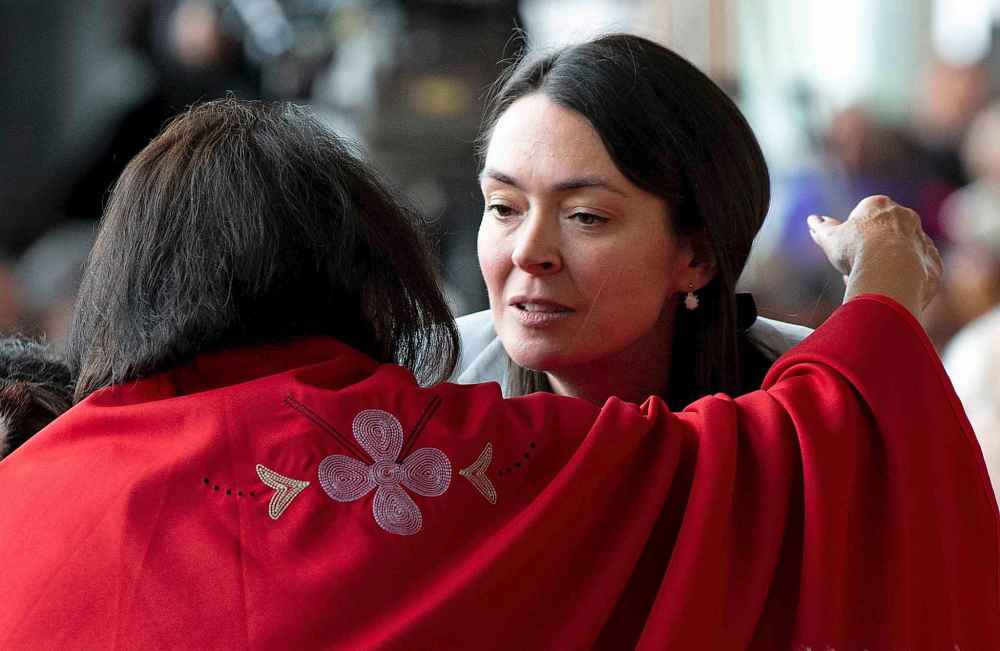
The report hails Winnipeg Police Service Chief Danny Smyth for connecting officers with grassroots activists, so police can quickly respond when locals spot something suspicious in areas such as the city’s the North End.
He said part of that is owning up to past mistakes. “That’s how you move forward,” Smyth said.
Gatherings are already scheduled for next week in Manitoba to take stock of the report, which the Assembly of Manitoba Chiefs said is crucial, given how the province’s activists brought the MMIWG to light.
“Had it not been for the advocacy of grassroots and the families predominately in Manitoba, we wouldn’t be having this conversation today,” Grand Chief Arlen Dumas told reporters.
Indigenous and Northern Relations Minister Eileen Clarke said the Pallister government has already laid the groundwork for discussing the report with the province’s grand chiefs, leadership councils, organizations and with the families.
“We have to sit down and we all have to discuss where we go from here, what our priorities are, where do we start,” she said. “We need to move forward… we’ve created a trust here. Now, we’ve got to continue and not disappoint the people of Manitoba.”
The inquiry lasted 2 1/2 years, costing the federal treasury $92 million, plus searches and legal fees for provinces. It was marred by bureaucratic ineptitude, numerous resignations and claims of inadequate focus on Manitoba.
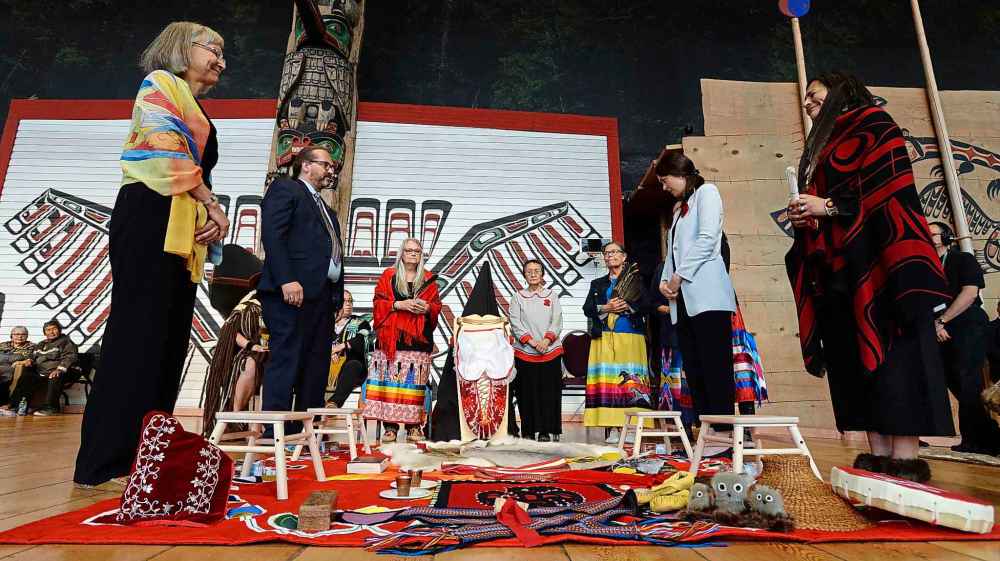
The commissioners have placed the final report in a cradle board, a traditional basket used to carry a toddler. It will travel Canada before being placed at the Winnipeg-based Canadian Museum for Human Rights.
— with files from Larry Kusch
dylan.robertson@frepress.mb.ca
Inquiry made last-minute request for cold-case files
OTTAWA — Hundreds of requests for cold-case files will almost certainly expire next month, leaving families across Canada without answers about their missing relatives.
Monday’s final report from the National Inquiry into Missing and Murdered Indigenous Women and Girls states the inquiry’s forensic team only issued subpoenas for police files at the end of the process.
Between late September 2018 and the end of that year, the team requested 479 files from police forces, though only received 174, the report reads.
Head commissioner Marion Buller said police only disputed sending two files, as both cases were in front of the Federal Court.
Issuing subpoenas is one of the few powers the inquiry held under its exceptional status with backing from all 10 provinces.
The inquiry’s forensic task force was supposed to review the files and look for “systemic problems, barriers and weaknesses” in the investigations, searches, coroner work and communication with families.
Michèle Audette claimed her fellow commissioners tried to issue subpoenas for “thousands of documents” starting from around 2017, “but the technology was not ready, and we were.”
Buller said many police forces willingly provided documents without a subpoena, and said her team was “not late” in its last-minute filing.
“We couldn’t have a basis for issuing the subpoenas until we started to hear from families and survivors. So in the total picture, it’s not late for issuing them.”
The report says the Winnipeg Police Service provided five of the 29 requested files.
WPS Chief Danny Smyth said in an interview the 29 files amount to tens of thousands of documents, which the force paid to have roughly six employees compile on a full-time basis.
“It was a pretty big undertaking,” he said. “In the spirit of co-operation and the significance of this, we were prepared to assign some people to do that.”
Smyth said he’s seeking clarity on what happens next, with the inquiry expiring in four weeks, and no recommendation in the report to follow-up on these files.
“At the end of June, when our mandate ends, we cease to exist as a legal entity,” Buller said. “So there would be no person or office to send the information to.”
The inquiry report says the commissioners tried to make these issues clear when requesting a two-year extension from the government; the federal Liberals instead granted six extra months.
— Dylan Robertson
Winnipeg event to take stock of report
OTTAWA — Manitoba Keewatinowi Okimakanak has organized two forums in Winnipeg and Thompson next week to take stock of the National Inquiry into Missing and Murdered Indigenous Women and Girls report.
MKO’s MMIWG liaison unit will host two events for Manitobans “who have been affected by this issue or who want to help move the recommendations forward.”
The Winnipeg event takes place June 11 from 1 to 4 p.m., at the Ma Mawi Wi Chi Itata Centre (445 King St.).
The Thompson event is June 10, 3:30 to 6:60 p.m. at St. Joseph’s Hall (340 Juniper Dr.).
Inquiry commissioner Michèle Audette will attend both sessions.
— Dylan Robertson
History
Updated on Monday, June 3, 2019 7:05 PM CDT: Fixes photo captions.
Updated on Monday, June 3, 2019 7:10 PM CDT: Adds photos
Updated on Tuesday, June 4, 2019 1:53 PM CDT: corrects reference to granddaughter










